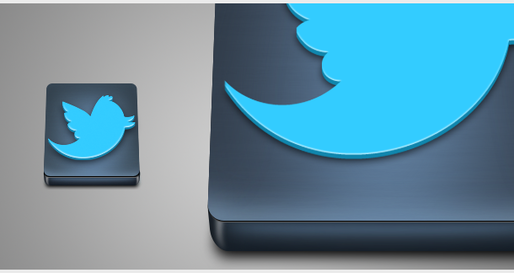#FollowFriday and #WritersLift: Don't Just Follow, Engage!
Originally published in LitReactor on August 30, 2019.
If you follow members of the writing community, odds are you’ve noticed #FollowFriday or #ff trending at the end of every workweek. The tradition started with a tweet from entrepreneur Micah Baldwin back in 2009 and, even though Twitter has grown exponentially and its landscape has changed dramatically over the last ten years, it’s still going strong.
In case you haven’t encountered it, #FollowFriday is precisely what it sounds like. Every Friday, individuals in the writing community (amongst others) tweet a list of people they think others should follow. It’s a good way to broaden your sense of the writing community and bring writers, readers, and publishers together. But #FollowFriday has become closely intertwined with #writerslift, which is dedicated to boosting writers with follower counts below a certain number. The combo is steering the community away from Baldwin’s founding intentions and putting an excessive amount of attention on a vanity metric that will have limited impact in the long run.
Despite what many marketing articles may tell you, a larger follower count doesn't automatically equal influence or book sales. Does this mean #FollowFriday and #writerslift are evil? Of course not. But while getting 1000+ followers in 24 hours is cool, #FollowFriday (and even #writerslift) is about engaging with the writing community—not just dropping a random gif into a massive conversation for visibility’s sake.
Engagement can be defined in a number of ways, but to keep things simple let’s stick with Union Metrics' definition, which says, “…engagement includes everything from a like to a click to a response,” and in Twitter’s case a retweet. In other words, it’s a metric used to gauge how well the content you’re tweeting is resonating with people. Usually, the people who engage with you regularly are the ones you can count on to promote your work, read your work, and buy your book. If you have a massive number of followers but a low engagement rate, the only thing you can count on is that your impressions will increase.
Twitter is a tool designed to help you interact and be an active literary citizen. Freelance editor and publicist Michelle Weber explains, “Social media is meant to be conversational,” and it’s essential for both up-and-coming and established writers to make sure they’re not just spewing out tweets to get followers, but rather starting conversations and adding to larger discussions. Writers who add value to the writing community have stronger, more avid follower networks.
“But while getting 1000+ followers in 24 hours is cool, #FollowFriday (and even #writerslift) is about engaging with the writing community—not just dropping a random gif into a massive conversation for visibility’s sake. ”
And Twitter is a vast and beautiful multiverse for writers and readers. You can review and share your thoughts about books you’ve read (sidebar: for the love of the game, don't tag authors in bad reviews!), enter giveaways for books on your #TBR list, track publishing news, take part in events like #PitMad, pitch articles and op-eds (another sidebar: not all publications respond well to this, so do your research!), and find calls for submissions. You can also tweet hot takes; ask questions about the writing process, business, etc.; plug authors and blog posts; tell authors you appreciate their work; let everyone know what you ate for lunch or that you just finished the third season of Stranger Things. All of these things create opportunities for engagement. You shouldn’t do these things just to gain followers. You should do it because you want to have meaningful interactions and put down roots in whatever part of the writing community you call home.
Even Twitter’s new desktop interface wants you to focus on engagement. Aesthetically the redesign isn’t the greatest, but the one thing it’s gotten right is now all your engagement tools (e.g. #explore, notifications, messages, lists, etc.) are easily accessible the moment you log in. But to see your followers-to-following ratio, you have to navigate to another screen. If that’s not an attempt to encourage users to get out there and interact with people, who knows what is.
So sure, keep taking part in #FollowFriday and #writerslift. Use them to broaden your audience and connect with new people. But remember: Your follower count is just a number. What really matters is what you bring to the Twitterverse and how it’s resonating with the community. In the long run, offering valuable and genuine content is what’s going to make you feel more at home in the writing community and ultimately grow your platform.
Originally published in LitReactor on August 20, 2019.

